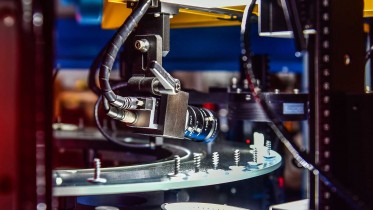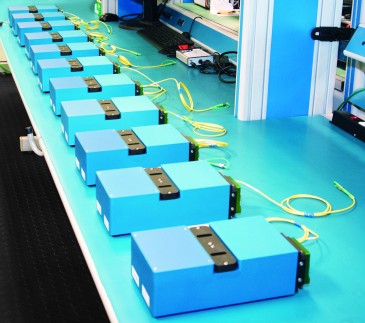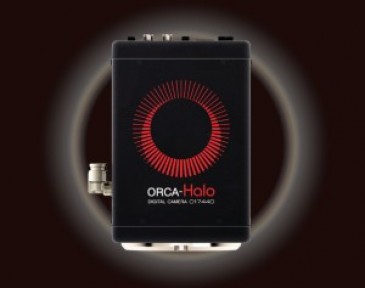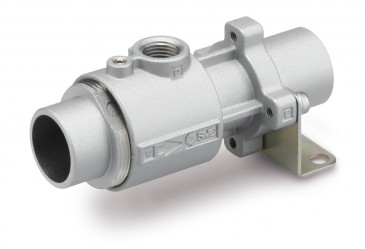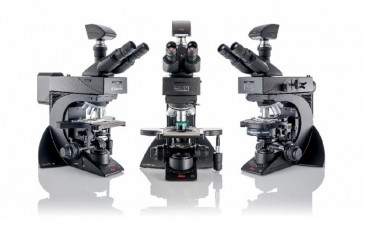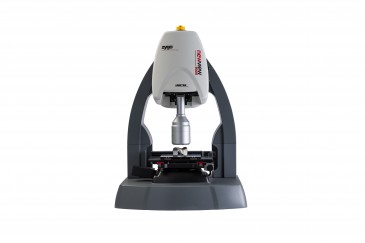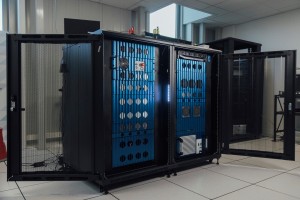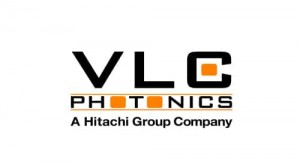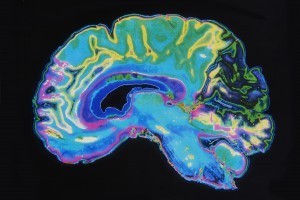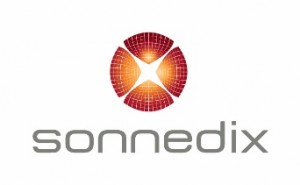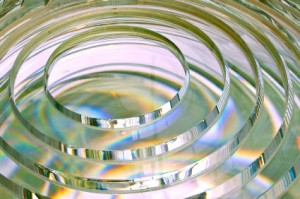
If solar power is going to play a major role in our future energy mix, it’s going to have to get bigger and more efficient. Concentrating solar power can be the answer to both of those problems, as it paves the way for larger, higher-efficiency solar power plants.
In fact, the two largest solar power plants ever constructed have been brought online in the last two years, but they utilize different techniques for concentrating the sun’s energy, mirrors and Fresnel lenses. But which technology will come out on top in the competition to provide the most efficient, scalable solar power?
Mirrors: The first concentrating technology
Mirrors were the first technology used to concentrate solar power onto collectors. The pioneering power tower plant design overcame a major weakness of early solar power collectors: the inability to achieve large-scale capacity.
In the 1980s, photovoltaic systems were in their infancy, and not very efficient, but solar water heaters had already come into their own, so the natural strategy for using solar energy was to produce electricity the same way coal, gas, and nuclear plants did: produce heat to make steam to turn a turbine. Solar One in California came online in 1982 with a production capacity of 10MW, ten times the capacity of the largest photovoltaic system then installed.
Advantages of mirror concentrating
Mirrors continue to be used to concentrate the heat from the sun, although as the plants have grown in scale, water has ceased to be the heat transfer medium of choice. When Solar One was adapted to Solar Two, it began using molten salt as its heat transfer medium, which allowed the plant to operate at higher temperatures (higher efficiency).
Mirrors continue to be used to concentrate the heat from the sun.
Molten salt also allows the plant to store solar energy in the salt tanks to allow the plant to continue producing energy even after the sun has gone down. In fact, Spain’s Gemasolar plant became the first solar plant to produce 24 hours of power, because it could continue producing energy from the heat in its salt tanks. This capacity can significantly increase the amount of energy produced by the plant. In the case of Gemasolar, the 19.9MW plant will produce 110GWh of energy a year, compared to only 40GWh produced by a similarly-sized photovoltaic plant.
The current world’s largest concentrating solar power plant, Shams 1 in the United Arab Emirates, uses a slightly different concentrating technique. Instead of a central power tower, the plant uses trough-shaped mirrors to concentrate solar radiation on an oil-filled tube in the center of the trough. The heated oil is then used to produce steam that turns a turbine to generate electricity. The plant’s efficiency is up to about 25% solar-to-electric efficiency, based on estimates of Shams 1’s overall performance, slightly better than the 18 to 22% achieved by power tower designs.
A different design is the Stirling engine plant, which looks like a radar dish that concentrates sunlight onto a horn. These can achieve much better efficiencies, about 32%, but they are expensive and difficult to use on a large scale. Although there are a few MW scale plants around, the technology is no longer cost effective against the falling price of PV and other forms of concentrating solar.
Fresnel lens concentrating solar
A Fresnel lens is a lens with multiple refracting planes designed to improve the concentration of light coming from many different angles onto a single point or line. By concentrating solar power onto solar cells, they can increase the amount of sun striking the solar cell, and allow a relatively small amount of silicon photovoltaic (PV) material to be used in large solar panels. Since the silicon PV material is the primary determiner of the cost and efficiency of the solar panel, these cells allow a high-efficiency panel to be made for a fraction of the cost.
The first experiments with these types of generators occurred in the 1970s, again as an attempt to overcome the efficiency limits and high cost of PV cells. However, these systems have remained fairly small scale, rarely reaching over the 1MW size limit until the 21st century. However, with recent innovations in technology, the Fresnel lens concentrating panel is ready to go big time.
The largest Fresnel concentrating solar power plant opened in 2012. The 30MW plant near Alamosa, Colorado uses 504 tracking panels each with a 60kW capacity. The Fresnel lenses concentrate solar energy about 500 times onto multi-junction solar cells. Multi-junction solar cells are able to convert more sunlight into electricity because they are made of multiple materials, each of which harvests energy from a different portion of the spectrum.
The efficiency of the cells used in the Alamosa plant is 25%, and the manufacturer is currently producing cells with approximately 36% efficiency, showing that this technology has a great deal of potential in the near future.
Compact linear Fresnel systems
These mirror-based systems, also called compact linear Fresnel reflectors (CLFR), use the same principles as a Fresnel lens, using flat-plane mirrors that track with the sun to reflect light onto a tube that contains water, which is heated to steam and sent to storage and turbines. These systems can be built in smaller areas than either tower systems or trough solar heating systems.
The largest plant using this technology (30MW) opened in Spain in 2012. It is only the third commercial scale plant to open using this technology, so less is known about this technology than others in terms of efficiency. According to the operator, the plant has a very high efficiency, 38%, although this hasn’t been confirmed by independent testing.
Which Is the technology of the future?
Although both systems have demonstrated their ability to be applied on a large scale to create utility-size amounts of power, it seems that the Fresnel lens technology has the greatest potential for improvement. Although the technology has not hit the level of efficiency claimed by CLFR plant operators, the technology shows much greater promise. Using multi-junction solar collectors may deliver unprecedented levels of solar energy production. Efficiencies of up to 45% have already been demonstrated in the lab, and the theoretical efficiency of the technology is up to 87%.
It seems that Fresnel technology has the greatest potential for improvement.
However, the future of solar energy, as the future of energy production as a whole, is probably best with a balance of different types. Fresnel lens-based photovoltaic generators will be the best for meeting peak energy demand during the day, while the storage capacity of thermal solar plants can help to address concerns about dramatic fluctuations in production at night or due to low sun days.
Written by Matthew B. Candelaria, a technology journalist working with Advanced Thin Films.

































 Back to Features
Back to Features